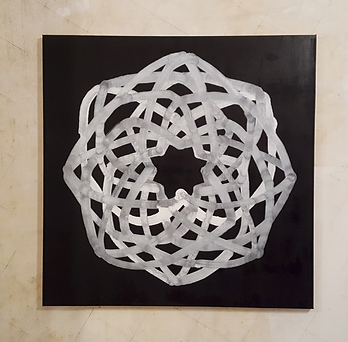Marie Cloquet
TRAVELING LIGHT
08/09/2019 - 20/10/2019
Marc Rossignol
Synchrone
Opening Sunday 9 September 2018
Marc Rossignol
Synchrone
Opening Sunday 9 September 2018
Marc Rossignol
Synchrone
Opening Sunday 9 September 2018
Marc Rossignol
Synchrone
Opening Sunday 9 September 2018
Herman Van Ingelgem
Foreign Bodies & Protheses
06/09/2021 - 17/10/2021
PAUL ARMAND GETTE
(Lyon, 1927) lives in Paris (France).
Like his contemporary Herman De Vries, Paul-Armand Gette studied science before dedicating himself to experimental poetry, art and the publishing of magazines and books. References to the insect world and a fascination for collecting botanical data are a constant in his poetic and visual practice. At the end of the 1940's, Gette began to paint and ten years later he realises his first 'sculptures' ( 'cristallisations verbales'). He also starts with 'lettrist' compositions on paper and canvas, for which he makes use of recuperated wood and lead type. In the mid-1960's, Gette moves to Paris. In 1965, his book Pteres appears, with letter prints of discarded letters. It is the beginning of a work in which the artist's book will play a central role. Also in 1965, Gette comes in contact with Paul De Vree. He publishes his poetic and artistic work in magazines such as Phases and OU-Cinquième Saison and is at that time working on the launch of the magazine ETER in Paris. But he does not limit himself to paper. In 1966, he experiments with an environment containing mobile sculptural elements. A year later, he organises a multimedia event in the Kunsthalle Lund, that he describes as poésie action / art total and which includes La Monte Young, Ben Vautier and Robert Filliou (all artists with an affiliation to Fluxus).
.png)
.png)

